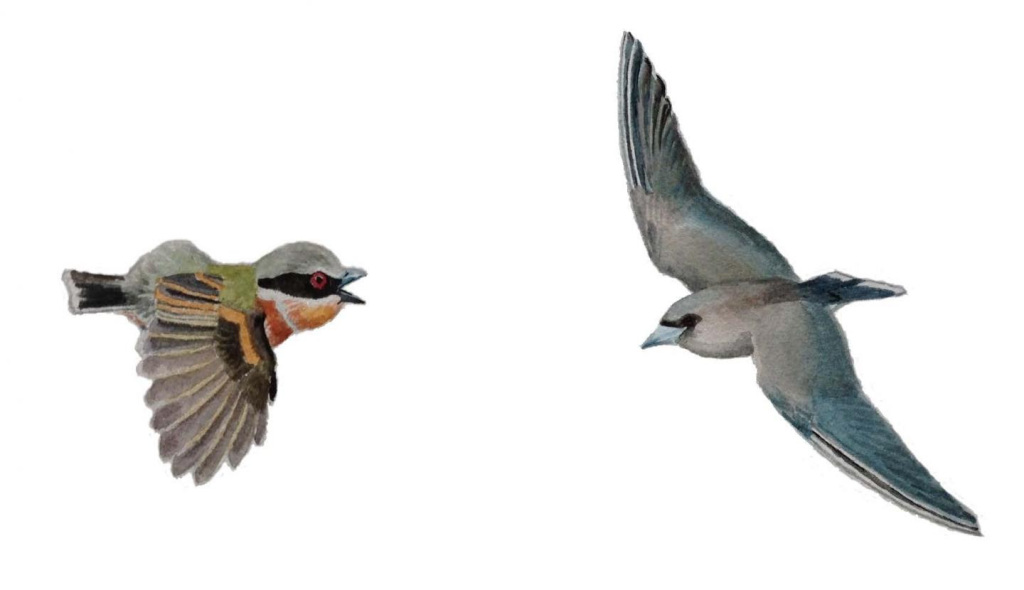
Bird on the left, Dark batis, has smaller round wings for shorter distances. Dusky Woodswallow (right), has long pointy wings evolved for long-distance flying. (Drawing by Jon Fjeldså)
Flying might give birds more mobility and freedom than some animals on the ground, but a new study shows the extent of that freedom is determined by the bird’s wing shape. Long pointy wings allow their owners to travel longer distances, while shorter, rounder wings restrict the birds’ habitat to a smaller area. Additionally, the wings of various species tend to become shorter and rounder the closer they live to the equator. Authors have created the first global map to show the distribution of 782 species of birds across the planet as a result of their wing shape.
Authors:
Jonathan D. Kennedy, Michael K. Borregaard, Knud A. Jønsson, Petter Z. Marki, Jon Fjeldså, Carsten Rahbek
Corresponding author:
Jonathan D. Kennedy, Center for Macroecology, Evolution and Climate, University of Copenhagen. Tel: (+45) 20 28 65 54, Email: jonathan.kennedy@snm.ku.dk
Original paper published in Proceedings of the Royal Society B on December 14, 2016.


